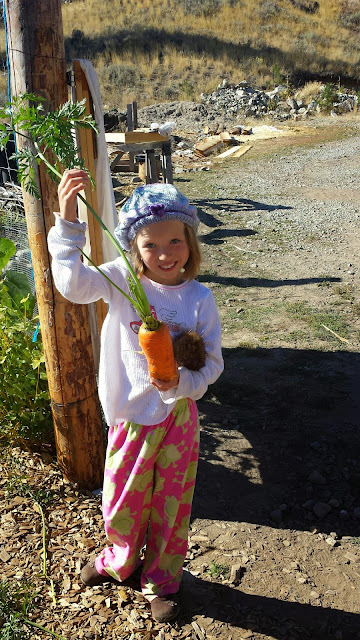When your cold frame is frozen shut with ice,
it may feel like season extension has come to a close.
Enter: the "greens keeper" in your fridge.
I do not know why these work so well -- or why they cost so much. However, I do know they are worth every penny. (No, I do not sell Tupperware... I just grow fond of things that work really well in my kitchen.)
Traditionally, the lettuce keepers were shaped to fit a head of iceberg lettuce. As all foraging gardeners know, this shape does not necessarily match the dimensions of the goodies we bring into the kitchen.
Instead, the old style rectangular celery keepers work great, or the fancy new veggie keepers with either one or two vents to open or close, depending on what kind of food you are keeping.
In the dead of winter, the greens from my garden are as crisp as the day I picked them -- as long as I have remembered to pick them before the first deep freeze. I missed a lot of greens this year because the weather turned so cold so fast. I'm grateful for what I did harvest, though. My last harvest day was November 9th, and most of these greens were picked in the week before that, all from protected beds. A month after being picked, they are still in perfect condition (above).
Today it occurs to me that a lettuce keeper and a cold frame have a lot more in common than you might think. Using either a cold frame outdoors or a greens keeper in the fridge, the process hinges on:
- Growing your plants so that they reach maturity in the fall. (Either way, having winter greens in a Northern climate is not about planting seeds in autumn... it's about planting them in July.)
- Protecting plants from a killing freeze.
- Maintaining (not really growing) fresh mature plants so that they can be eaten during winter.
♢ ♢ ♢ ♢ ♢ ♢
My experience so far shows the following results...
Greens that last exceptionally long in a veggie keeper:
✯ Kale ✯ Swiss Chard ✯ Many lettuce varieties ✯ Dark purple beet greens
Greens that keep reasonably long:
✯ Green Orach
✯ Regular Beet greens
✯ Love Lies Bleeding Amaranth leaves
✯ Chives
✯ Carrot greens
✯ Some lettuce varieties
Greens that must be kept separate because they are the first to go:
✯ French sorrel
 Of course you can use these keepers for other veggies such as carrots and celery, but I find those do fine in the crisper drawer of the fridge. For the valuable real estate inside my keepers, I prioritize greens.
Of course you can use these keepers for other veggies such as carrots and celery, but I find those do fine in the crisper drawer of the fridge. For the valuable real estate inside my keepers, I prioritize greens.
♢ ♢ ♢ ♢ ♢ ♢
Food for Thought:
As exciting as it is to have food alive and growing in December
even after a hardcore freeze
-- and yes, this means a lot to me --
For the volume of greens I am keeping alive in my cold frame this winter and for the amount of work that went into this project...
A greens keeper can actually hold quite a lot!
(And I have several -- mostly second-hand purchases, a couple bought new)
I'm willing to acknowledge the square footage and work vs. yield ratio, but I'm not giving up the underground cold frame for anything. It's too much fun having live plants outdoors during winter! There is no plastic needed for cold frames, they don't take up space in your fridge, and they require no electricity. I'm also learning that you can transplant a higher number of plants into the cold frame in autumn: each plant does not need a lot of space as they are not doing much growing during winter. This practice would increase the yield.
Plus in the spring, the cold frame will begin to produce
before anything else even gets started. I can't wait...






















































